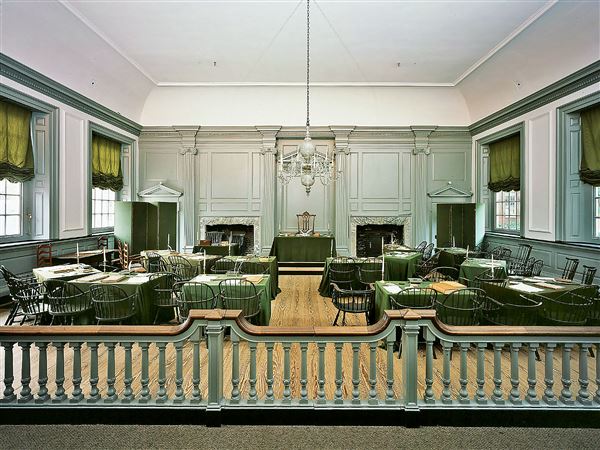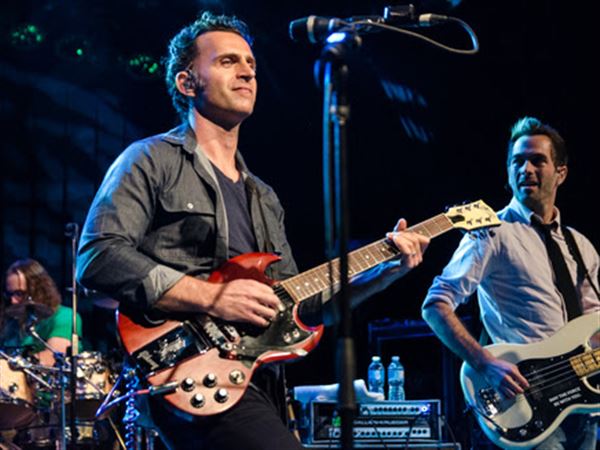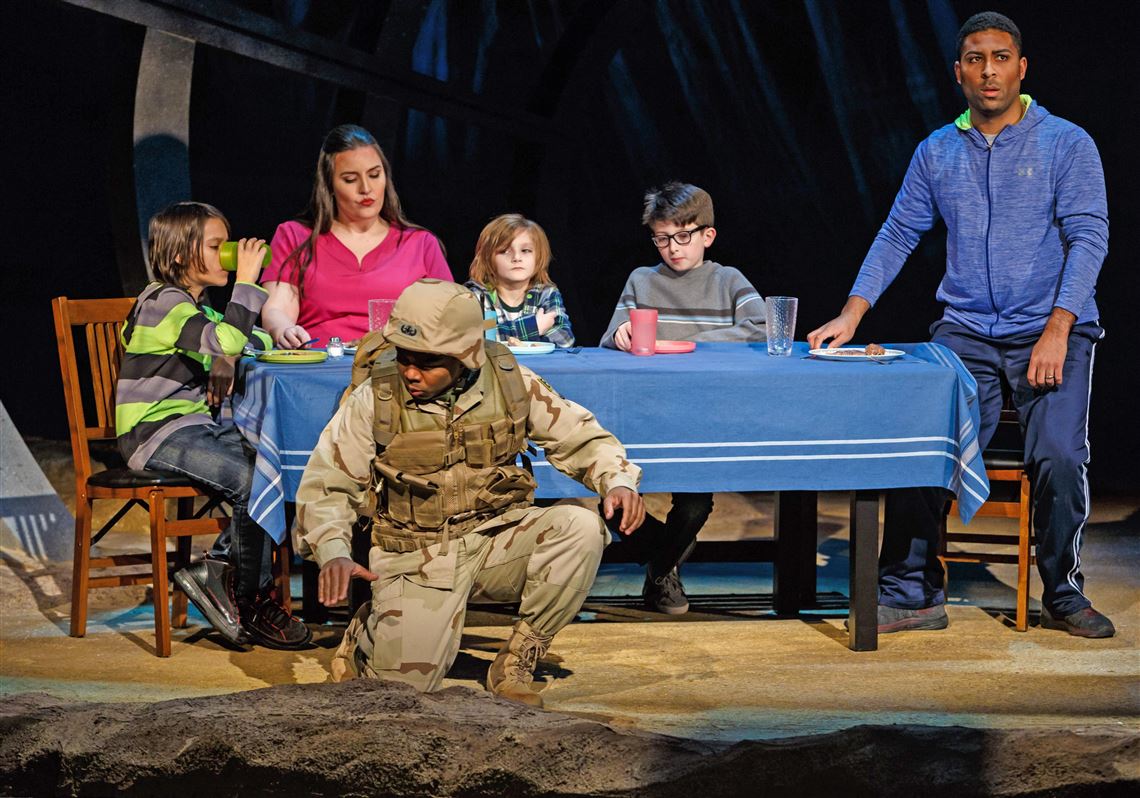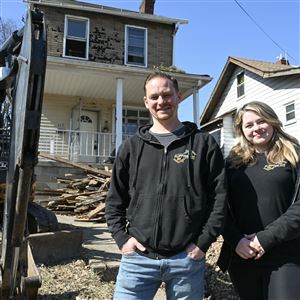Pittsburgh Opera’s Saturday production of “The Long Walk” was a smart, compelling testament to the quality of the opera’s resident artist program.
“The Long Walk” refers to a soldier’s walk towards a live explosion, as well as his psychological journey home after the war. The two-act opera is based on Iraq war veteran Brian Castner’s written account of his time in the military’s Explosive Ordnance Disposal (EOD) unit and his tortured reintegration into civilian and family life.
Composer Jeremy Howard Beck partnered with librettist and playwright Stephanie Fleischmann to adapt Mr. Castner’s story to the stage, and the “The Long Walk” premiered in summer 2015 at Opera Saratoga.
Saturday’s production in the Pittsburgh CAPA Theater, Downtown, starred resident artists Benjamin Taylor and Leah de Gruyl as Mr. Castner and his wife Jessie, respectively. Both singers delivered their roles with rich, full-toned voices, their vocal palettes amply covering the complex array of mental baggage the real Mr. Castner brought home into the bedroom.
The narrative is disjointed, even chaotic — memories of Iraq blur and cover real-time domestic events, dinner, a birthday party, a bedtime story — while other soldiers or figures from Mr. Castner’s past sing in counterpoint to the protagonist’s home life. Scenes shift without pause, leaping forward and backward in time at points and juxtaposing civilian and military life side-by-side at others.
Glen Lewis led the pit orchestra, beginning with a simple, rhythmic pulse to accompany Mr. Taylor as he ran in place through his opening aria. Mr. Taylor spends much of the opera running to escape the “Crazy,” as he calls it, the suffocating feeling and memory loss caused by mental damage sustained from being close to hundreds of explosive shockwaves.
Mr. Beck’s score is taut and energetic, cuing the audience between Iraq flashbacks and suburban life in Buffalo, N.Y., with simple but effective instrumental gestures. Electric guitars conjure a gritty desert feel, while slide whistles often accompany the Castner’s three rambunctious boy children’s mischief, etc.
Balance between the small orchestra and onstage action was mostly good, but at times the orchestra was a bit loud and obscured the singers. This was most noticeable in Mr. Taylor’s opening minutes and whenever the trio of his three sons sang.
Sets and stage direction also proved stellar, with set designer Katy Fetrow’s minimalist nods to the opera’s 15 different locales set starkly against a sandy backdrop with a monolithic, spiraling concrete structure that suggested a “bunker” or perhaps “nose cone.” Resident artist Frances Rabalais’ stage direction kept the mayhem crystal clear, propelling the piece with a sense of narrative momentum and intermittent moments of pathos despite the jumbled, fractured nature of Mr. Castner’s writings and the libretto adaptation.
The most poignant scene featured Mr. Taylor helping his son with hockey pads while his EOD brothers dress one of their own in 80 pounds of Kevlar for the long walk, taken only “for your brother, for your brother’s children, for your brother’s children’s children.” Other vocal highlights included resident artist Shannon Jennings as Mr. Castner’s psychologist, singing of blast-induced neurotrauma with an effortless, natural authority and granting the opera a rare moment of catharsis. Adrianna Cleveland’s lament was raw, infused with passion, and the strident confidence of the male EOD quartet in the first act was pure swagger distilled into aria form.
Pittsburgh Opera’s production, the third-ever staging of the show, makes for an entirely uncomfortable but equally moving experience.
CORRECTION: A previous version of this article misspelled the military’s Explosive Ordnance Disposal.
This program repeats Tuesday at 7 p.m., Friday at 7:30 p.m. and Sunday at 2 p.m.
Jeremy Reynolds: jreynolds@post-gazette.com or 412-263-1634; twitter: @Reynolds_PG. Mr. Reynolds' work at the Post-Gazette is supported in part by a grant from the San Francisco Conservatory of Music, the Getty Foundation and the Rubin Institute.
First Published: January 21, 2018, 5:02 p.m.



















